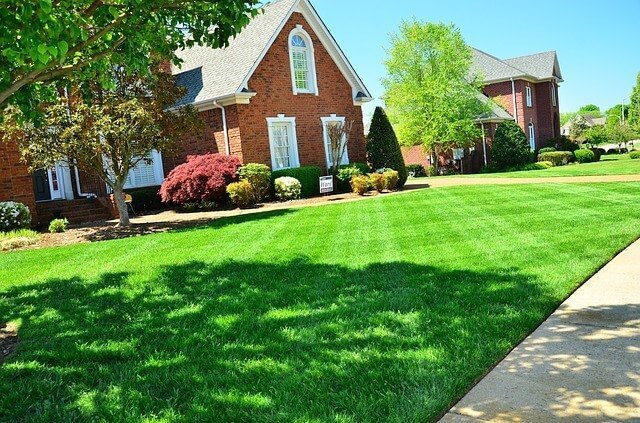Hello!
As a landscaper, your business thrives on projects in your local service area. However, with so much competition from other landscaping companies nearby, getting noticed and winning over new clients can take a lot of work.
This is where search engine optimization (SEO) comes in – it allows you to increase your online visibility and connect with more local homeowners and businesses searching for landscaping services.
But SEO can seem daunting, especially in a competitive local market. How do you optimize your website and content to outrank your competitors? What specific SEO strategies should landscapers focus on?
By the end, you’ll have a thorough game plan to revamp your website and online presence and generate more qualified leads from potential customers in your area who are searching for landscapers on Google and other search engines.
Why Local SEO Matters for Landscaping Companies
As a local service-area business, having a strong local SEO strategy is critical for landscaping companies.
 Consider these statistics:
Consider these statistics:
- 46% of all Google searches are looking for local information
- 88% of searches for local services (like landscapers) on mobile devices result in either a call or visit within 24 hours
- 72% of consumers who perform a local search visit a store/business within 5 miles of their location
With numbers like these, it’s clear that showing up prominently in local search results could mean the difference between thriving and struggling as a landscaping business.
 Through local SEO, you can optimize your online presence and content to rank highly for keywords with local intent like:
Through local SEO, you can optimize your online presence and content to rank highly for keywords with local intent like:
“Landscapers near me”
“Best landscaping companies in [city]”
“Residential landscaping services [town]”
This visibility puts you in front of homeowners and businesses in your service area actively looking to hire a local landscaper like you. And by showcasing your expertise through your website and content, you can more effectively convert those prospects into new customers and projects.
Keyword Research for Landscaping Services
One of the most important aspects of any successful SEO campaign is identifying and targeting the right keywords. This allows you to create content that speaks directly to what your potential customers search for regarding landscaping services.
However, don’t make the mistake of going after single broad keywords like “landscaping”—given the nationwide competition, these will be incredibly difficult to rank organically. Instead, your keyword research should focus primarily on the longtail, geo-targeted keywords that contain your service offerings and location.
 For example, some good longtail keywords for a residential landscaping company in Hartford, CT, could include:
For example, some good longtail keywords for a residential landscaping company in Hartford, CT, could include:
- “Landscaping installation hartford ct”
- “Lawn care services west hartford”
- “Hardscaping companies hartford county ct”
- “Best landscape design hartford”
- “Residential landscape contractors avon ct”
To find the best keywords for your landscaping business, use tools like:
- Google Keyword Planner
- KeywordsFX
- SEMrush
- Ahrefs
- Moz Keyword Explorer
You can enter seed keywords related to your services and locations to generate lists of potential longtail keywords to target. Be sure to analyze criteria like:
- Relevance to your landscaping services
- Average monthly search volume
- Keyword difficulty and competition
From there, you can better prioritize which keywords to focus on creating content and optimizing around first based on factors like search volume, competition, and business impact.
On-Page and Technical SEO for Landscapers
 Once your target keywords are defined, the next step is to optimize your website’s pages to help them rank in the search results for those terms. Key areas of focus include:
Once your target keywords are defined, the next step is to optimize your website’s pages to help them rank in the search results for those terms. Key areas of focus include:
Title Tags & Meta Descriptions
The title tag is an HTML element that specifies the title of a webpage, while the meta description is a short blurb summarizing the page content.
Both of these are extremely important for SEO as they are displayed in search results as the first impression of your page:
Example title tag: Hartford, CT Landscaping Services | XYZ Landscaping Company
Example meta description: XYZ Landscaping is the #1 residential and commercial landscaping company in Hartford County. We offer expert lawn care, design, installation, and maintenance services. Get a free quote!
Your title tags should be 60 characters or less and include your primary keyword and location. Meta descriptions should stay under 155 characters and compellingly summarize the page while incorporating your keyword. Crafting enticing and relevant titles and descriptions can improve click-through rates from search results.
Headlines and Body Content
In addition to title tags and meta descriptions, the headlines (H1, H2, etc.) and body copy on each page must also be optimized with your target keywords. This shows search engines what the page is about and helps to reinforce its relevance for those terms.
 However, be sure to avoid keyword stuffing tactics that make content unnatural.
However, be sure to avoid keyword stuffing tactics that make content unnatural.
Instead, incorporate keywords in a reader-friendly way, aim for a longer form of content (500+ words), and place your primary target keyword in areas like:
- H1 heading
- First 100 words of body copy
- Periodically, throughout the main content sections
This on-page optimization helps search engines better understand and rank the relevance of your content.
Page Speed and Mobile Friendliness
In our fast-paced digital world, users have become intolerant of slow page load times or sites that need to be self-responsive. As a result, Google has made mobile friendliness and page speed key ranking factors for SEO.
Use tools like Google PageSpeed Insights, GTMetrix, or Pingdom to analyze page speed. Aim for scores of 80+ on both mobile and desktop to indicate optimal loading times.
 If pages are loading slowly, there are various tactics to speed things up like:
If pages are loading slowly, there are various tactics to speed things up like:
- Enabling browser caching
- Minifying HTML, CSS, and JavaScript resources
- Optimizing images
- Using a content delivery network (CDN)
For mobile friendliness, Google’s Mobile-Friendly Test can audit your site. Be sure you have a responsive design that adjusts content and layout fluidly across device sizes. This provides a smooth user experience for those searching and interacting on mobile.
Site architecture and internal linking
How your pages and content are structured and connected can influence SEO and user experience. An ideal site architecture has a simple, logical hierarchy and uses proper internal linking.
For example, your site could have a main landscaping services page that splits off into subpages for categories like lawn care, design, installation, etc. Then, those pages could link to supporting pages or blog content that expands on specific services like hydroseeding or patio installation.
The easier search engine crawlers and human visitors navigate your site, the better your SEO performance and engagement.
Local SEO and Citations
While general on-page and technical fundamentals are critical, landscaping businesses must also invest heavily into local SEO to outrank competitors and generate more leads from nearby homeowners and businesses.
Some key focal areas for landscapers include:
Google My Business Listing Optimization
 Your Google My Business (GMB) listing is the key to appearing in Google’s local 3-pack, local finder, and Google Maps for relevant searches around your service areas.
Your Google My Business (GMB) listing is the key to appearing in Google’s local 3-pack, local finder, and Google Maps for relevant searches around your service areas.
Be sure your GMB is fully claimed, accurate, and optimized with:
- Company name, address, phone number (NAP)
- Service areas and categories
- Hours of operation
- Photos
- Reviews and responses
With a strong, fully fleshed-out GMB listing, your chances of being visible in local searches will be much higher than the competition optimizing this important asset.
Regional and Hyper-Local Content
 Incorporate geographic terms and local keywords into your on-site content experience to demonstrate local authority and relevance. Ideas include:
Incorporate geographic terms and local keywords into your on-site content experience to demonstrate local authority and relevance. Ideas include:
- Local city/neighborhood pages detailing your service areas (e.g., “Landscaping Services in South Windsor, CT”)
- Locally-optimized blog content around things like local events, guides, news
- Local landing pages (e.g., “Spring 2024 Landscaping Deals in Hartford County”)
The more you can infuse your website with geographic references relevant to your service areas, the easier it is for search engines to tie your business to those locations definitively.
Local Directory Listings and Citations
Local citations are any mention of your business NAP (name, address, phone) on other local or industry-specific directories across the web. Having an abundance of accurate, consistent citations helps reinforce your legitimacy and local authority.
 Be sure to claim and optimize your listings on top local business directories like:
Be sure to claim and optimize your listings on top local business directories like:
- Yelp
- Yellow Pages
- Manta
- SuperPages
- Yahoo! Local
- Best of the Web Local
- Local.com
- And any niche landscaping or home improvement directories
Link Building for Landscapers
While on-page and on-site optimizations help you rank better within your local service area, link building helps you improve your overall website authority across search engines.
The quality and quantity of inbound links to your site from other authoritative external sites is a strong ranking signal to Google that your site and content are valuable and trustworthy.
Some effective link-building tactics landscapers can leverage include:
 Local Link Building
Local Link Building
- Getting listed in directories like your local Chamber of Commerce
- Partnering with related local businesses to exchange links
- Sponsoring or promoting local events or causes
- Guest contributing content to local blogs and publications
- Encouraging existing happy clients to link to your site from their company website
Industry Publications and Directories
- Securing backlinks from .edu, .gov, and .org sites related to landscaping/lawn care
- Submitting guest posts or contributing expert quotes to industry blogs and publications
- Listing your business in trusted online directories related to your niche (PLANET/NALP directories, for example)
Unlinked Brand Mentions
Using a tool like Ahrefs, you can discover mentions of your company across the web without a link to your site. You can then contact these sites to see if they’ll add a link to make the mention “complete.”
 Creating linkable assets like studies, tools, visuals, or in-depth guides encourages natural linking from relevant sites over time. Link building takes dedicated effort, but authority links are one of the most valuable assets for improving search visibility.
Creating linkable assets like studies, tools, visuals, or in-depth guides encourages natural linking from relevant sites over time. Link building takes dedicated effort, but authority links are one of the most valuable assets for improving search visibility.
Content Marketing Strategies to Attract Local Leads
While you can have a perfectly optimized website, true SEO success often hinges on your business’s content marketing strategy. Content like blogs, videos, guides, case studies, etc. serve as the “meat” you need to fully satisfy search intent and demonstrate your expertise and authority as a local industry leader.
Here are some proven content types and strategies to incorporate into your SEO for landscapers:
Blog Content
Blogging regularly with keyword-rich content covering topics relevant to prospects’ interests (landscaping trends, DIY tips, etc.) can attract tons of organic traffic and leads over time.
Some ideas could include:
- 10 Xeriscape Landscaping Ideas for [Your Area]
- How to Revive Your Lawn After the Winter: An [City] Guide
- Eco-Friendly Landscaping: Sustainable Lawn Care Tips for [Locales]
Prioritize local SEO keyword optimization and create blog posts that best answer the questions or information your target audience is likely searching for online.
On-Site Guides and Portfolios
 Every landscaper should have in-depth content describing their key service offerings with visual aids like before/after galleries or walkthrough videos.
Every landscaper should have in-depth content describing their key service offerings with visual aids like before/after galleries or walkthrough videos.
Some examples could include guides like:
- The Complete Guide to Hydroseeding Services in [Metro Area]
- Landscaping Design 101: How We Approach Your [Town/City] Outdoor Living Space
- [City] Patio & Hardscaping Ideas to Create Your Perfect Backyard Oasis
This helps instill confidence that you are an authority in your field while also optimizing additional content on your site for SEO.
Video Content
The explosion of video streaming and platforms like YouTube provide ample opportunity for landscaping businesses to create and optimize videos around their services. Ideas could include:
- DIY tutorials
- Walkthroughs of real projects
- Client testimonials
- Company origin and culture videos
- Landscaping tips and seasonal advice
You can post and optimize these videos on YouTube to rank for more search visibility and embed them across your website and landing pages.
Those are just a few ideas – get creative with your content and aim to create an ever-expanding hub of information and resources to demonstrate your expertise within your niche and local market continually.
Measuring and Tracking Landscaping SEO
 An SEO strategy is only effective if you closely monitor performance and continually refine the approach based on data and insights.
An SEO strategy is only effective if you closely monitor performance and continually refine the approach based on data and insights.
As part of managing your SEO for your landscaping business, consistently track and analyze metrics like:
Organic Search Traffic Volume
How much search traffic is your website generating each month? Where are visitors entering? Monitoring traffic volume and sources helps assess the impact of your optimizations.
Top Pages and Traffic Sources
Once you understand overall organic traffic, you can dive deeper to see which pages are most successful and what search terms drive traffic. This will help you identify your most valuable page content.
Bounce Rate and Engagement
It’s not just about driving traffic – you want to look at how engaged users are with your content through bounce rates, average session duration, pages per visit, etc. Ultimately, you want traffic that turns into leads.
Conversions and Lead Volume
 Speaking of leads, you must track organic lead volumes (form submissions, phone calls, emails, etc.) and conversions through search engine channels. This quantifies the ROI of your SEO efforts.
Speaking of leads, you must track organic lead volumes (form submissions, phone calls, emails, etc.) and conversions through search engine channels. This quantifies the ROI of your SEO efforts.
Ranking Positions
Track your average ranking positions for your target keywords over time to compare your performance with competitors. Tools like Pro Rank Tracker can provide helpful snapshots and insights.
Gather these points and insights using tools like Google Analytics and Google Search Console. Consider investing in an SEO reporting dashboard or hiring an agency for more streamlined analysis and optimization recommendations based on the numbers.
SEO Tools and Resources for Lawn Care Businesses
Throughout this guide, we referenced some of the top tools landscapers can utilize as part of an SEO program. To summarize, here are some of our top recommendations for landscaping SEO:
Keyword Research Tools
- Ahrefs
- SEMrush
- Moz Keyword Explorer
- KeywordsFX
- Google Keyword Planner
Technical SEO Tools
- Google PageSpeed Insights
- GTMetrix
- Google Mobile-Friendly Test
- Screaming Frog
- Google Search Console
Link Building Tools
- Ahrefs
- Link Explorer (Moz)
- Majestic
- Monitor Backlinks
Local SEO Tools and Resources
- Google My Business dashboard
- Google Business Profile Insights
- Moz Local
- BrightLocal
- Whitespark Local Citation Finder
Paid SEO Tools
- SEOMonitor
- Conductor
- Moz Pro
- Woorank
- SEMrush (suite of tools)
SEO Agencies and Consultants
 Working with an experienced SEO agency or consultant is the most surefire way to produce consistent, concrete results for many landscaping businesses.
Working with an experienced SEO agency or consultant is the most surefire way to produce consistent, concrete results for many landscaping businesses.
By partnering with the right SEO professionals, you can:
- Get expert help planning and optimizing a robust SEO strategy
- Have a team dedicated to continually building links and authority
- Create and optimize a steady stream of content tailored for maximum visibility
- Stay on top of the latest SEO best practices and algorithm changes
- Track performance through professional-grade analytics tools
- Get recommendations for continual improvement to outpace competitors
Maximizing your SEO performance through the guidance of an agency helps turn your website and online presence into a lead-generation powerhouse for your local landscaping business.
Conclusion
Mastering SEO for landscapers requires diligence, dedication, and an intimate understanding of your local service areas, target audience, and competitive landscape.
 However, the payoff of ranking your website at the top of local search results can translate to tremendous growth for your business through a steady influx of new high-quality leads and clients.
However, the payoff of ranking your website at the top of local search results can translate to tremendous growth for your business through a steady influx of new high-quality leads and clients.
By leveraging the strategies and techniques covered in this guide – crafting a thoughtful keyword strategy, optimizing your website and content for on-page and technical factors, building a robust profile of local citations and links, publishing authoritative content your audience loves, and diligently measuring and refining your SEO performance –, you can position your landscaping business as the go-to local name for all residential and commercial lawn care needs.
Ready to get started on supercharging your SEO? Use the resources outlined here or consider partnering with a savvy digital marketing firm to hit the ground running on making the landscaping website a lead generation juggernaut. The first click is only a local search away.
Thank you!
Join us on social media!
See you!






